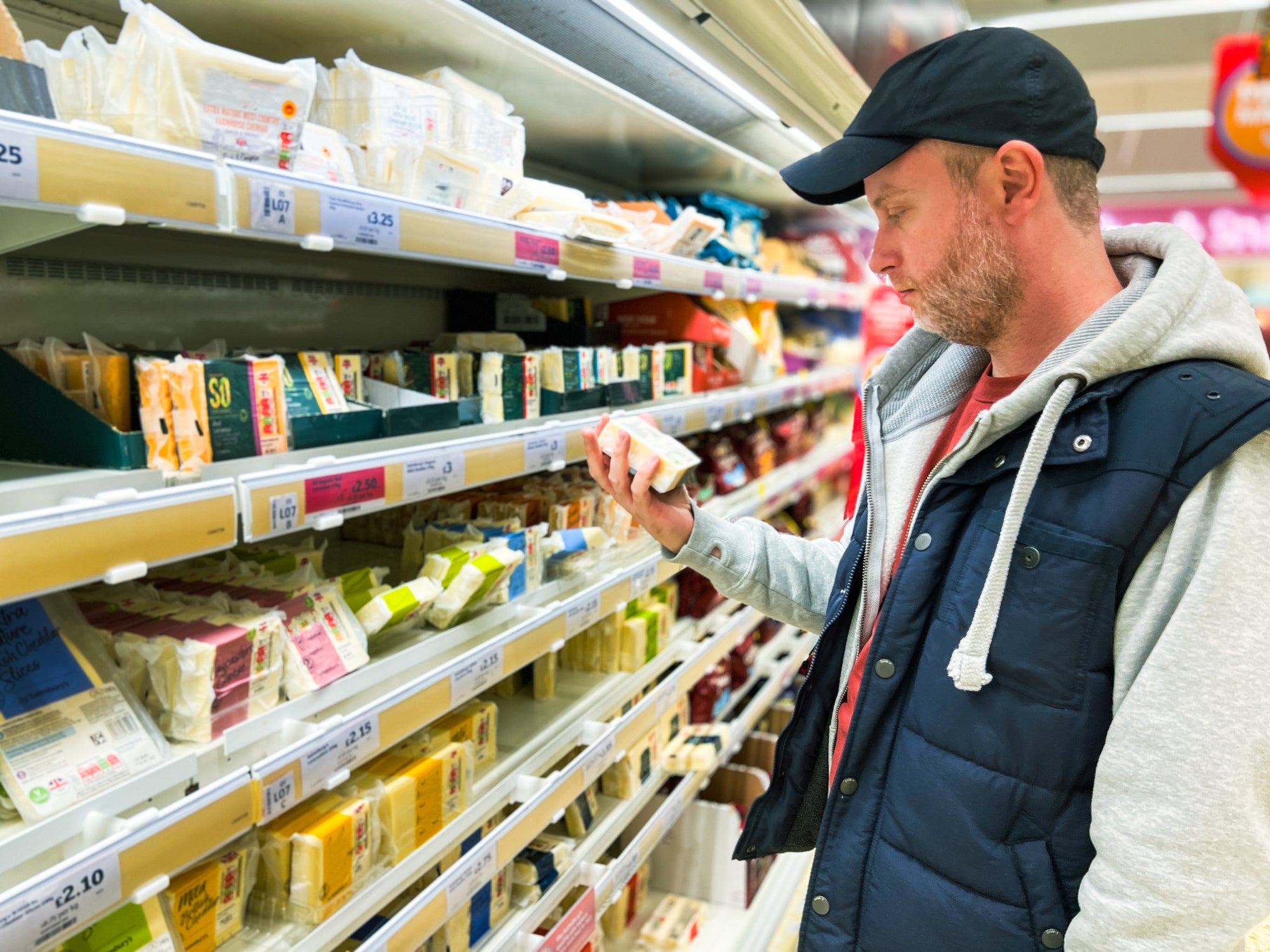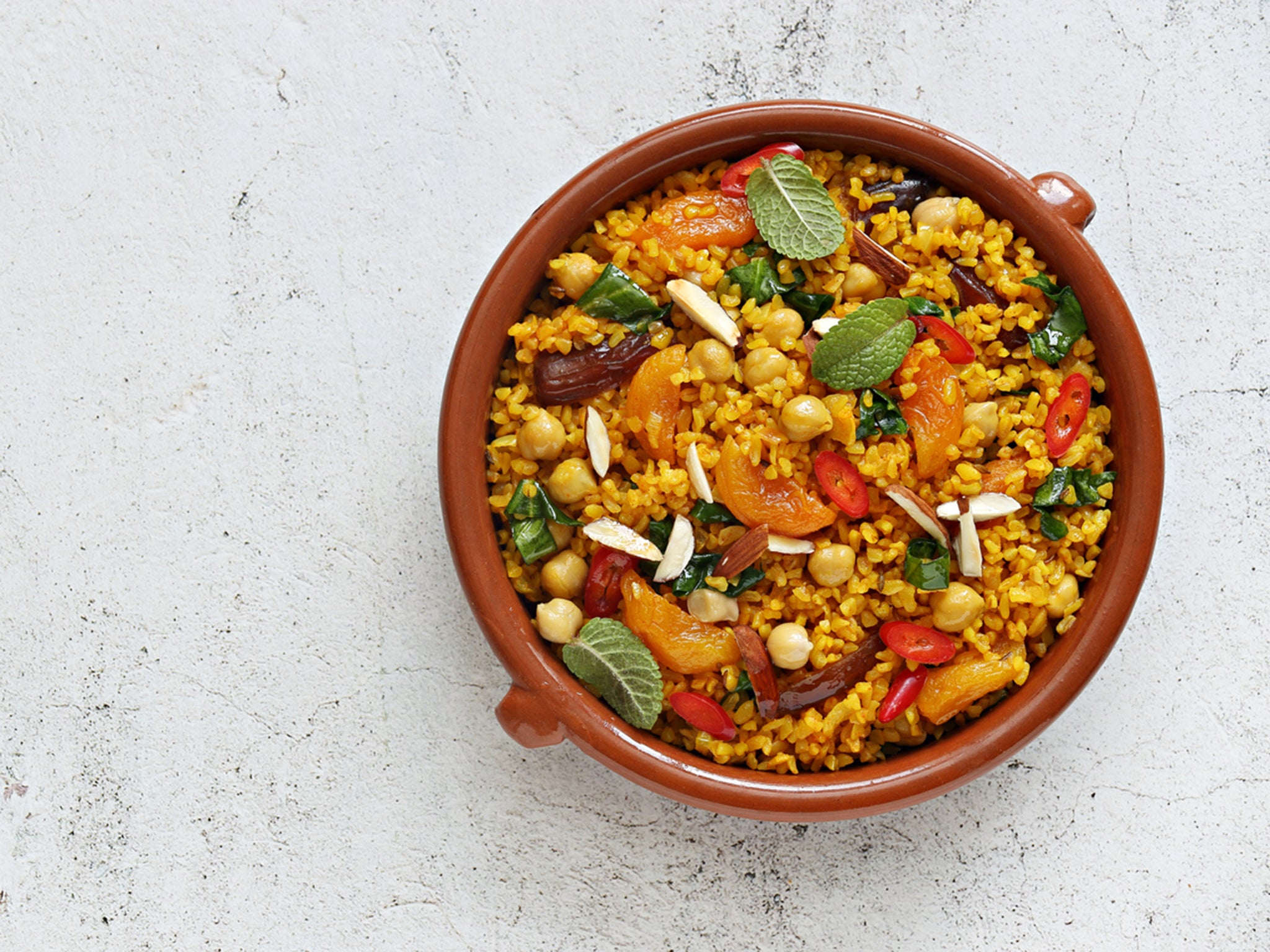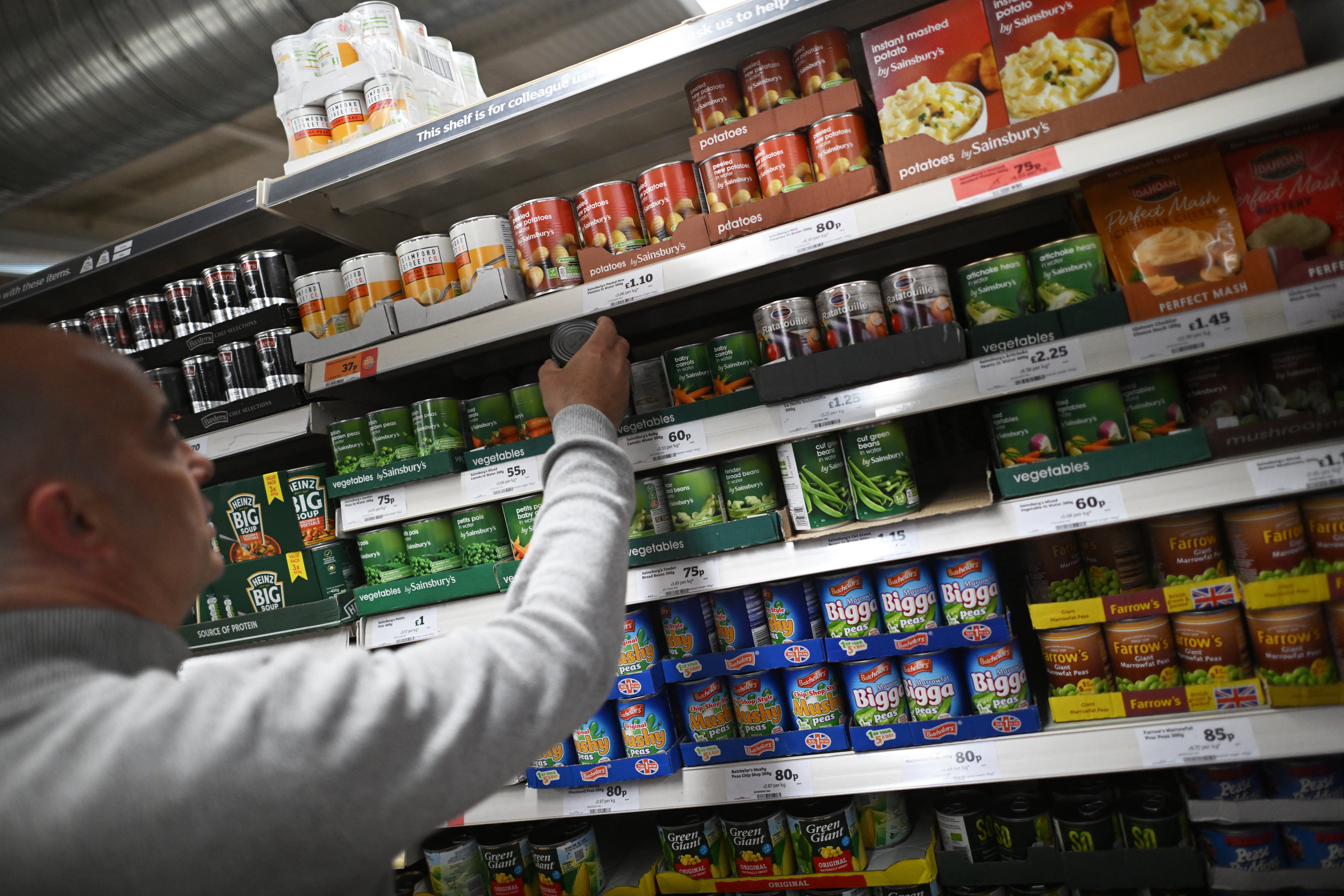Walk down any supermarket aisle and it can feel like you need a chemistry degree to shop for dinner. From “high protein” cereal bars to “low-fat” yoghurts and “plant-based” ready meals, the labels are designed to scream health – but the ingredients list often tells a different story.
Many of these so-called “healthy” options fall into the category of ultra-processed foods (UPFs) – products linked to a growing list of health concerns, from weight gain and poor gut health to an increased risk of chronic disease.
In the UK, more than half the calories we consume now come from UPFs, and among teenagers, that figure rises to nearly two-thirds. Research published in BMJ has linked higher consumption of UPFs with a significantly increased risk of cardiovascular disease, type 2 diabetes and early death – and yet they dominate our trolleys, often disguised as better-for-you choices.
“These foods are engineered to taste irresistible, low in fibre, vitamins and minerals and high in sugar, salt and saturated fat,” says Rob Hobson, a nutritionist and author of Unprocess Your Life. “They’re easy to overeat, can be addictive and often push healthier, nutrient-dense foods off our plates.”
For all the warnings, though, UPFs aren’t going anywhere (yet). They line every aisle, often hidden in plain sight and masquerading as healthy options – so where on Earth are shoppers supposed to start when it comes to making better choices?
The top five red flags on labels
You don’t need to memorise the entire periodic table to navigate a supermarket, but Hobson says there are certain ingredients worth watching out for if you want to understand how processed a product really is.
Emulsifiers, for example, are designed to blend oil and water and create smooth, creamy textures in foods like ice cream, sauces, chocolate and plant milks. “Some studies suggest emulsifiers can alter gut bacteria and thin the gut’s protective mucus layer,” he explains.
Artificial sweeteners are another marker of a highly engineered product. Aspartame, sucralose and acesulfame K are common in “diet” drinks, low-calorie snacks and many protein bars. “They’re considered safe by regulators, but some studies suggest they can subtly alter gut microbes or influence appetite regulation,” says Hobson.
Modified starches, such as maltodextrin or modified maize starch, are also frequently used to bulk out foods and extend shelf life. “They are rapidly digested and contribute calories without fibre, which can spike blood glucose and add little nutritional value.”
Flavour enhancers, like monosodium glutamate (MSG) and yeast extract, are added to make snacks, sauces and ready meals taste richer and more satisfying. While “they are safe at permitted levels, they make savoury snacks and ready meals moreish, encouraging overconsumption of products that are often high in salt and fat”, Hobson explains.

Then there are stabilisers and gums, such as xanthan gum, guar gum and carrageenan, which are added to yoghurts, sauces, plant milks and ice creams to create smooth textures and stop ingredients separating. “They aren’t ingredients you’d normally have at home,” and therefore a marker of foods that have been heavily engineered, but “while generally recognised as safe, some gums can cause digestive discomfort”.
Finally, he highlights protein isolates, which are increasingly common in protein bars, shakes and many plant-based meat substitutes. These include pea protein isolate, whey protein concentrate and soy protein isolate. The problem is, “they strip protein away from its natural food source,” says Hobson, “and while useful in certain contexts (like sports nutrition), they’re a signal the food has been reformulated rather than built from whole ingredients”.
It’s worth noting, Hobson adds, that many UPFs will contain a combination of these, and “while one additive on its own isn’t necessarily harmful, when you see several of these signals together, it’s a strong indication you’re looking at a food that has been manufactured in a way that prioritises convenience, taste and shelf life over nutritional quality.”
How to spot a UPF without overthinking it
If you don’t want to spend your entire shop glued to the back of every packet, Hobson suggests sticking to a few simple rules. One is the “five-ingredient rule”: if you don’t recognise five or more ingredients on the label, assume it’s ultra-processed. “Whole or minimally processed foods usually have just one or two ingredients, like oats, rice or tinned tomatoes, and even traditional foods like bread or cheese rarely need more than a handful.”
It’s not foolproof, though: “A homemade curry paste or granola might have 10 ingredients and still be healthy,” he adds.
While one additive on its own isn’t necessarily harmful, when you see several of these signals together, it’s a strong indication you’re looking at a food that has been manufactured in a way that prioritises convenience, taste and shelf life over nutritional quality
Rob Hobson, nutritionist
A better shortcut might be the kitchen cupboard test. Ask yourself: would I keep these ingredients at home? “If you see ingredients like invert syrup, carboxymethylcellulose or artificial flavourings, then the answer is no,” he says.
Packaging can also be a giveaway. “Whole foods don’t need marketing,” says Hobson. “Fresh fruit, vegetables, eggs or rice speak for themselves. UPFs often come in bright wrappers shouting about ‘20g protein’, ‘low sugar’ or ‘fortified with vitamins’. These claims make products sound healthier than they really are.”
He also suggests looking at the food itself: “If it no longer resembles the food it started from, then the chances are it’s ultra-processed.”
The sneaky UPFs disguised as ‘healthy’
Even when you’re trying to make better choices, it’s easy to get caught out. “Flavoured instant porridge sachets are a good example,” says Hobson. “Oats themselves are healthy, but once sugar, flavourings and stabilisers are added, they slip into UPF territory.”
The same goes for cereal bars and protein shakes, which can be “more like science experiments to be honest”!
Similarly, many plant-based meat substitutes sound virtuous but are often built on protein isolates, gums and flavourings. “While they can help people cut down on red or processed meat, many supermarket versions are made from protein isolates, flavourings and stabilisers, which is very different to simply eating beans, lentils or tofu,” he says, though admits there are still some that contain whole ingredients like lentils, beans and pulses.
Low-fat fruit yoghurts are another trap: “They often lean more towards dessert once thickeners, sweeteners and colourings are added,” says Hobson. Even snacks that look healthy on the surface – such as lentil crisps, popped chips and baked vegetable puffs – are often extruded, flavoured and bulked out with emulsifiers.
Packaged foods that are actually fine
That doesn’t mean you need to avoid everything in a packet or tin. “There are plenty of packaged foods that people assume are bad just because they’re convenient, but they don’t meet the definition of a UPF,” says Hobson.

Tinned beans, lentils and chickpeas, for example, are usually just pulses and water – sometimes with a little salt – and are minimally processed. Frozen vegetables and fruit are another great option, often retaining more nutrients than so-called “fresh” produce that’s been sitting in the fridge for days. Plain porridge oats are still a healthy staple, as are nut butters made without palm oil or added sugars.
Even bread isn’t automatically a problem. “A simple wholemeal loaf from a bakery or made with flour, water, yeast and salt is not ultra-processed,” Hobson explains. “It’s the mass-produced supermarket loaves bulked out with emulsifiers, stabilisers and preservatives that fall into the UPF category.”
But, Hobson notes, “if this is all you can afford, then choose wholegrain and put your efforts into reducing your UPF intake elsewhere, especially if you are trying to feed a large family on a tight budget”.
How supermarkets and brands mislead us
It isn’t just the ingredients list that makes UPFs confusing. Hobson says food manufacturers are experts at giving these products what he calls a “health halo”.
“They often use front-of-pack claims like ‘high protein’, ‘plant-based’ or ‘fortified with vitamins’,” he explains. “These claims are permitted under UK labelling law and must meet certain criteria, but they can distract from the bigger picture, which is that the product may still be built from refined starches, sweeteners, emulsifiers and gums.”

Other tricks include highlighting what the product doesn’t contain – “low fat”, “sugar-free” or “no artificial colours” – and designing packaging to suggest wholesomeness, using earthy tones, images of fruit and grains and clever portion sizes that make calorie counts look smaller than they are.
“All of this makes it harder for shoppers to cut through the noise,” Hobson admits. “The more a product shouts about being healthy on the front, the more important it is to turn it over and check the ingredients list on the back.”
Smarter swaps for your trolley
Hobson suggests starting with small, realistic swaps. Instead of flavoured yoghurts, buy a plain base and add your own toppings – fresh berries, cinnamon, nuts or honey. Oats are another easy win: make them yourself with fruit and spices rather than reaching for instant sachets full of additives.
56%
of calories consumed in the UK come from UPFs
Tinned beans, chickpeas, lentils and fish are simple, cheap and minimally processed, while frozen vegetables, berries and fish fillets are just as nutritious as fresh. Choosing microwave pouches of plain brown rice or quinoa instead of flavoured instant rice gives you the same convenience without the extra stabilisers and modified starches. Even your sauces can be upgraded with a few staples: passata, tahini, pesto and coconut milk all make quick, additive-free bases.
It doesn’t have to be complicated. “With the right basics in your kitchen, you can build balanced meals in 10 minutes that are every bit as convenient as UPFs, but far more nourishing,” says Hobson.
Hobson is clear that the aim isn’t to eliminate UPFs entirely. “I don’t think cutting out UPFs completely is realistic or even necessary for most people,” he says. “Demonising them outright only creates guilt and anxiety, which isn’t helpful.”
He’s currently working with a charity to help families with four to six kids, who lack cooking skills and space to cook, to eat on a low budget. While research shows that diets high in UPFs come with greater health risks, it’s important to remember that not all UPFs are the same. The real issue, then, is when UPFs start to displace whole and minimally processed foods that we know are protective for long-term health. “The focus shouldn’t be on avoiding UPFs completely, but on balance and smarter choices,” says Hobson. “It’s not about perfection, it’s about tilting the balance so that the bulk of your diet genuinely nourishes you, while still leaving space for the foods you enjoy.”
Source link


